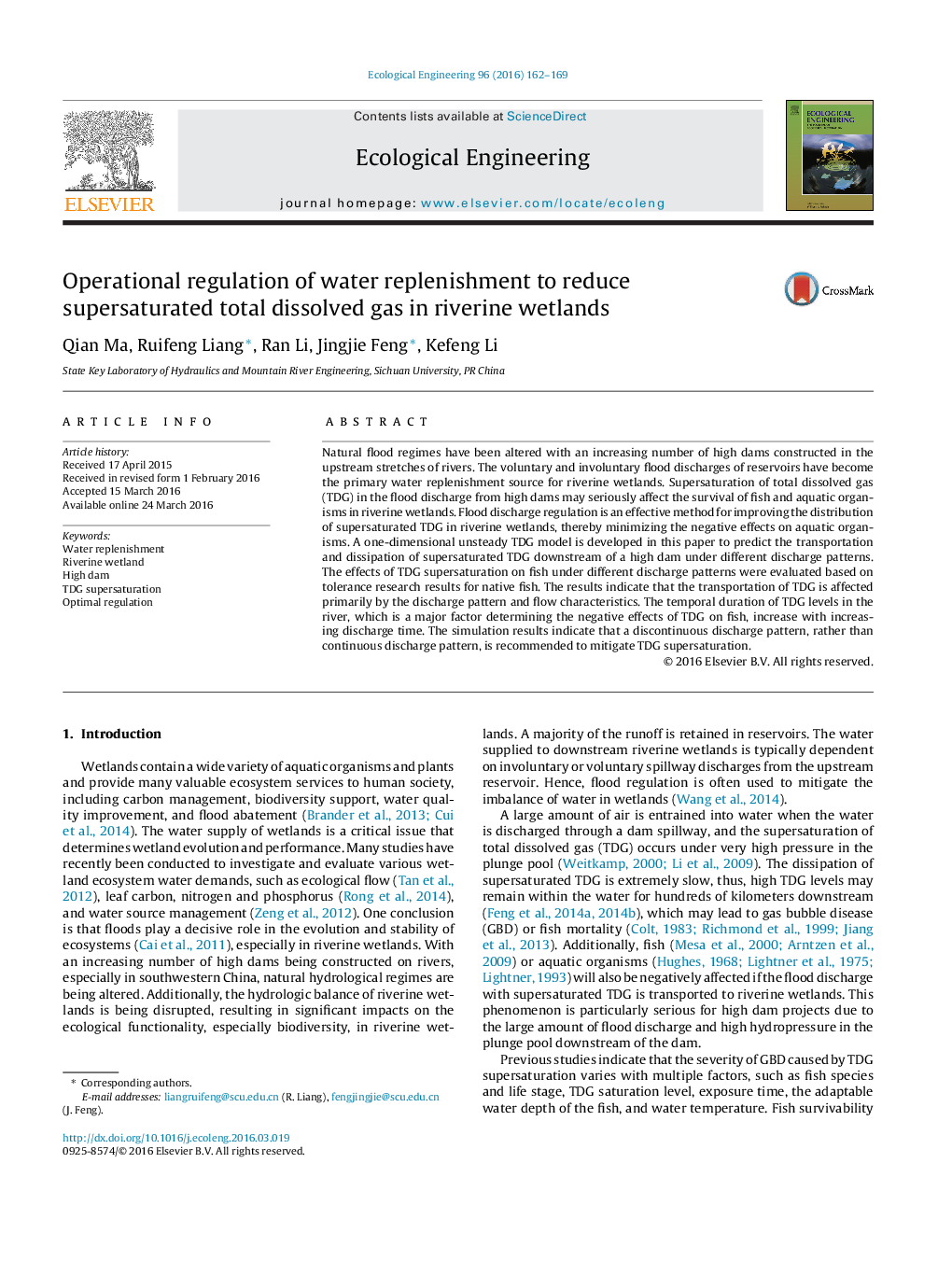| Article ID | Journal | Published Year | Pages | File Type |
|---|---|---|---|---|
| 5744098 | Ecological Engineering | 2016 | 8 Pages |
â¢A one-dimensional unsteady TDG model is used to predict the transportation and dissipation of supersaturated TDG.â¢Optimized operational regulations for discharges are discussed based on the fishes tolerance to TDG supersaturation in the riverine wetlands.â¢The duration of high-level TDG in river is a decisive factor for the negative effect on fish.â¢Comparing with continuous discharge pattern, discontinuous discharge pattern is recommended for the mitigation of TDG supersaturation.
Natural flood regimes have been altered with an increasing number of high dams constructed in the upstream stretches of rivers. The voluntary and involuntary flood discharges of reservoirs have become the primary water replenishment source for riverine wetlands. Supersaturation of total dissolved gas (TDG) in the flood discharge from high dams may seriously affect the survival of fish and aquatic organisms in riverine wetlands. Flood discharge regulation is an effective method for improving the distribution of supersaturated TDG in riverine wetlands, thereby minimizing the negative effects on aquatic organisms. A one-dimensional unsteady TDG model is developed in this paper to predict the transportation and dissipation of supersaturated TDG downstream of a high dam under different discharge patterns. The effects of TDG supersaturation on fish under different discharge patterns were evaluated based on tolerance research results for native fish. The results indicate that the transportation of TDG is affected primarily by the discharge pattern and flow characteristics. The temporal duration of TDG levels in the river, which is a major factor determining the negative effects of TDG on fish, increase with increasing discharge time. The simulation results indicate that a discontinuous discharge pattern, rather than continuous discharge pattern, is recommended to mitigate TDG supersaturation.
